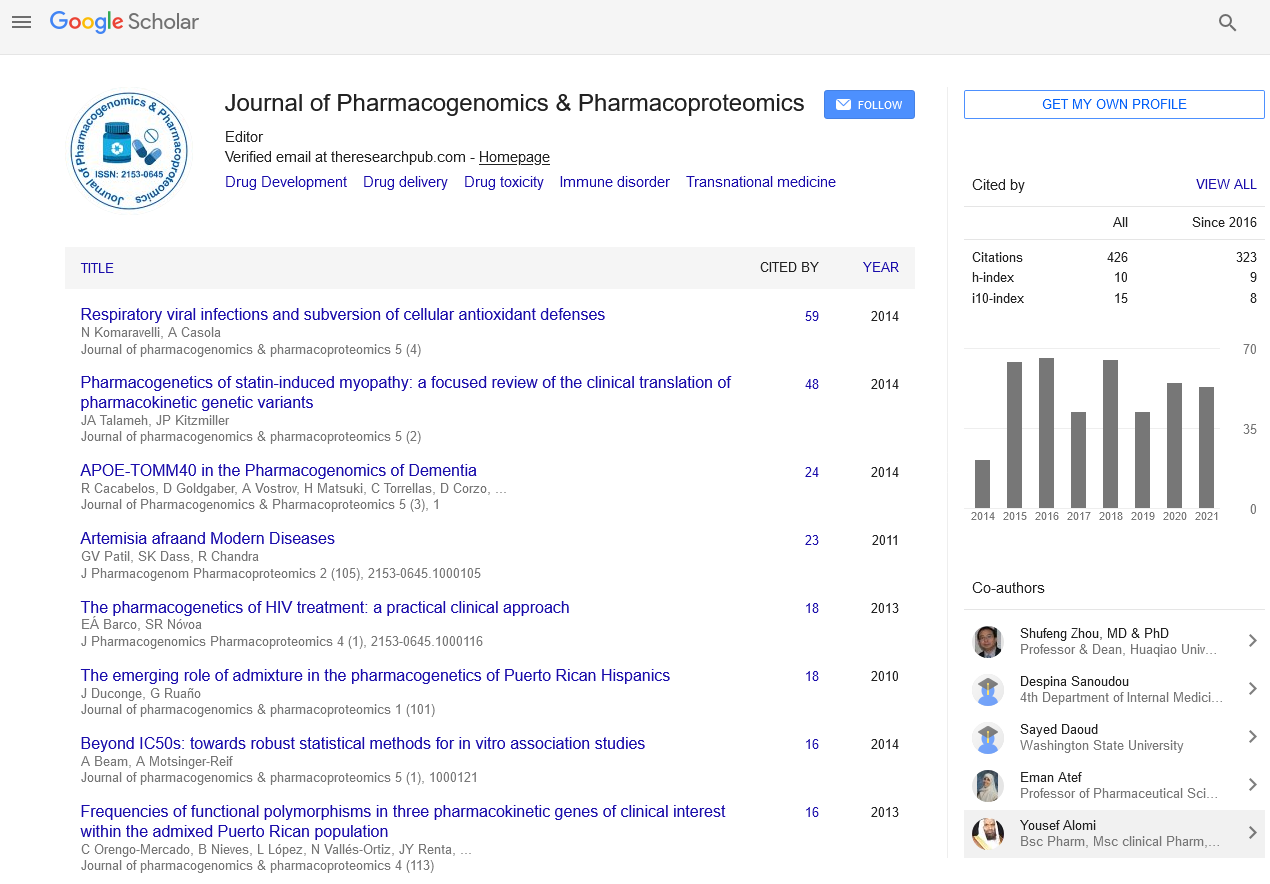Indexed In
- Open J Gate
- Genamics JournalSeek
- Academic Keys
- JournalTOCs
- ResearchBible
- Electronic Journals Library
- RefSeek
- Hamdard University
- EBSCO A-Z
- OCLC- WorldCat
- Proquest Summons
- SWB online catalog
- Virtual Library of Biology (vifabio)
- Publons
- MIAR
- Euro Pub
- Google Scholar
Useful Links
Share This Page
Journal Flyer

Open Access Journals
- Agri and Aquaculture
- Biochemistry
- Bioinformatics & Systems Biology
- Business & Management
- Chemistry
- Clinical Sciences
- Engineering
- Food & Nutrition
- General Science
- Genetics & Molecular Biology
- Immunology & Microbiology
- Medical Sciences
- Neuroscience & Psychology
- Nursing & Health Care
- Pharmaceutical Sciences
Abstract
Allograft Tissue Implantation and Inflammatory-Immune Model Considerations for the Treatment of Osteoarthritis
Coincidentally, the effects upon the immune system by inflammation have rendered inflammatory-immune considerations in the treatment of degenerative joint disease as a result. Setting: Clinical practice. Methods: Total of 77 subjects. 18 males/24 females were randomized for amniotic allograft tissue implantation with the remainder receiving corticosteroid injection (40 mg Kenalog). Serum blood work was obtained randomly (13 of the 42 total allograft tissue implantation treatment population). Results: Reduction of pain greater than 30% translating to functional improvement manifested in significant improvement in SF-36 results (Role-Physical and Bodily-Pain domains) was seen in the allograft tissue implantation population (shoulder/knee/hip joint patient population) at three months with the majority extending to six months. These results were not seen in the repeat corticosteroid population. In the glenohumeral joint population, (15/17) receiving allograft tissue implantation reported statistically significant improvement in SF-36 results (Role-Physical and Bodily-Pain domains) and (14/17) reported improved active range of motion with reduction of pain versus (2/10) receiving repeat corticosteroid injection reporting these subjective/objective findings at the three month interval. This benefit was sustained in (10/14) at six months. In the patellofemoral segment, (15/16) test patients reported benefit in the same SF-36 domains coupled with improved active functional range of motion and reduction of pain as compared to (8/20) in the repeat corticosteroid population at three months. At six months, benefit was retained in the allograft tissue population (12/16) versus (2/20) in the repeat corticosteroid population. In the femoroacetabular joint test population, (8/9) reported SF-36 improvement in the corresponding domains coupled with improved active joint range of motion and reduction of pain of at least 30%. (1/5) in the corticosteroid administration subjects reported the same benefit at three months. (8/9) allograft treated subjects preserved benefit at six months with (0/5) corticosteroid patients demonstrated benefit. Conclusion: As part of targeted multimodal treatment considerations, neuropeptide and amniotic allograft tissue may play an adjuvant role in degenerative joint disease addressment via purported inflammatory-immune pathways.


